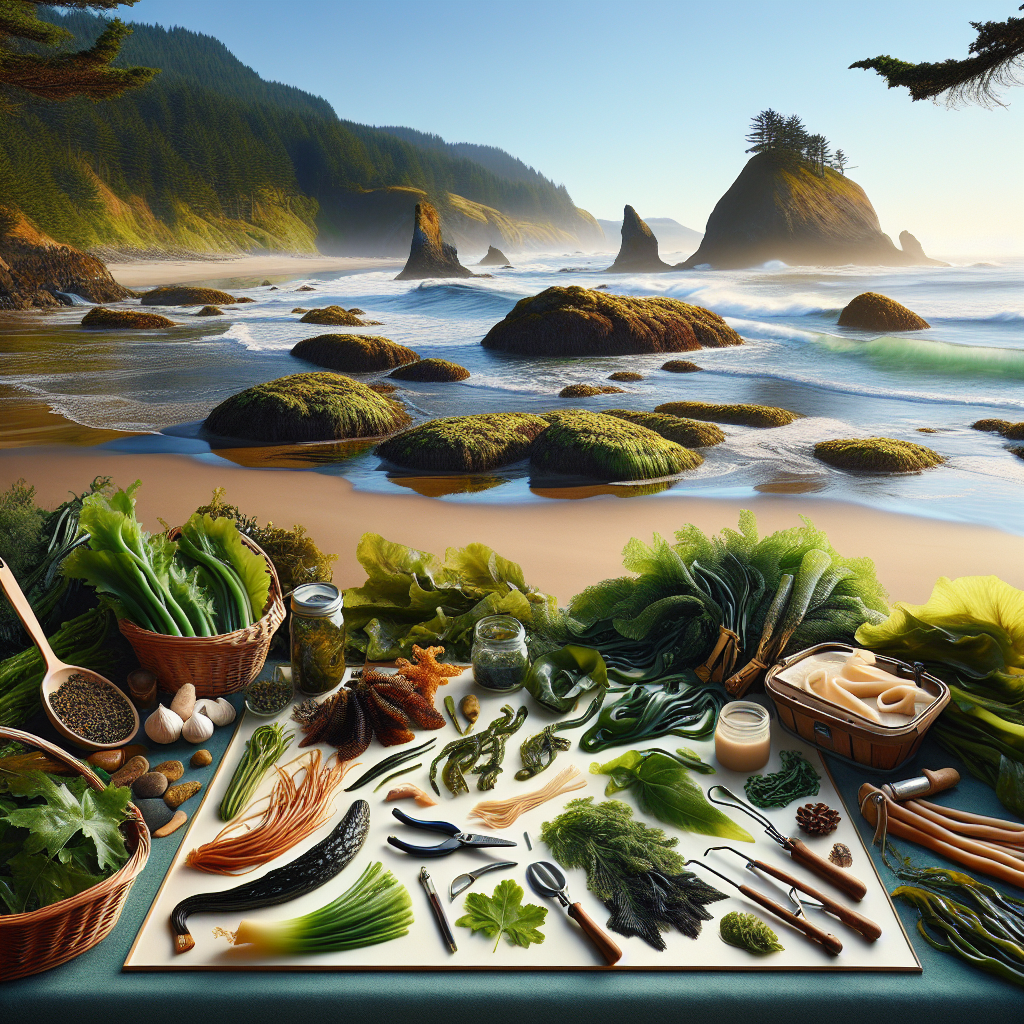Kickstarting Your Seaweed Foraging Adventure on the Oregon Coast: A Beginner’s Guide
Envision the gentle surf of the Pacific lapping against the rugged Oregon shoreline, the sharp scent of natural brine in the air, and kilometers of pristine beaches abuzz with possibilities. Specifically, the potential to explore one of nature’s most nutritious, and underutilized vegetables–seaweed. This guide is designed to furnish beginners with the essentials they need to embark on a culinary adventure, exploring the vibrant world of Oregon’s seaweed.
Choosing Your Seaweed
Fortuitously, the Oregon coast, with its ample seaweed varieties, is a forager’s dream. Several species stand out for their unique flavors and health benefits. Sea palm, nori, and sea lettuce are fan favorites found aplenty around Yachats, Waldport, and Seal Rock during their peak seasons. Another gem is kombu, abundant around Gold Beach. This deep-green kelp paunts a pleasant flavor, making it perfect for soups and broths.
The Importance of Tides and Timing
Oregon locals are very familiar with the fickleness of coastal weather, which can shift from sunny to stormy in an afternoon’s span. When planning a foraging trip, it’s crucial to keep an eye on the tide charts–low tide offers the best foraging opportunities. Ideally, aim for a minus tide, which reveals swathes of seaweed usually tucked beyond reach.

Furthermore, summer and spring bring optimal foraging conditions. Not only are the beaches more accessible, but it’s also the time when seaweed grows fast and lush, guaranteeing a good harvest. The Oregon Department of Fish and Wildlife’s tide tables offer handy reference for any novice forager.
What to Wear
Long gone are the days when Oregon was strictly flannel shirts and sneakers. The surefire outfit for a forager is a sturdy pair of rubber boots, gloves for handling rough seaweed, and layers of clothing for the swiftly changing weather. Don’t forget a waterproof coat; even when it’s not raining, some sections of the coast like those near Cape Blanco Lighthouse are known for their persistent sea mist.
Foraging Etiquette and Conservation
The Oregon coast is a treasure trove of diverse sea life, and it needs gentle handling to thrive. Seaweed, integral to this ecosystem, often hosts smaller marine life and provides a natural barrier against erosion. While Oregonians are welcome to forage, it’s essential to remember the conservationist’s creed: “Take only what you need, leave no trace”.
Notably, Oregon’s Department of Fish and Wildlife stipulates that foragers harvest no more than a basket of seaweeds, roughly equivalent to roughly two gallons. Next time you visit Oswald State Park equipped with your harvest bag, remember to be thoughtful of the ecosystem.
Formalities and Regulations
While the spirit of foraging celebrates freedom and connecting with nature, it does come with its share of rules. Before heading off to the breezy sea grasses at Clatsop Beach, ensure you’ve obtained your shellfish license from the Oregon Department of Fish and Wildlife. A comprehensive list of where and when you can harvest, as well as quantity limits can be found on their website or any of their regional offices.
Cooking Your Seaweed
Transforming fresh seaweed into a delicious meal can seem daunting initially but fear not. The basic process involves rinsing, blanching, or pickling your seaweed before adding it to your favorite dishes–it can replace spinach in a lasagna, be chopped into a salad, or even deep-fried into chips. Locals swear by the Oceanside Seaweed Cookbook by Chef Bella Baal, owner of the popular Astoria bistro, ‘Pearl of the Sea’, for inspiring recipes.
An Insider’s Advice
Now that you know how to forage seaweed on the rich Oregon coast, it’s time to dive in! Locals know that seaweed foraging is more than just a culinary adventure. It’s an opportunity to engage with the magnificent coastal environment up close, to appreciate the ever-changing Oregon seasons, and to deeply connect with the rhythm of the tides. Remember that the weather can change quickly, so always have a plan. Try to explore during weekdays as popular places like Cannon Beach can get crowded on weekends.
Welcome to the world of Oregon seaweed foraging, a delightful blend of nature, adventure, culinary creativity and most importantly, an essential wildlife conservation effort. Every forager plays a significant role in promoting the sustainable enjoyment of Oregon’s fabulous coastlines and vibrant marine life, from the rocky shores of Port Orford to the thundering waves of Florence’s Heceta Beach. So, all that’s left is to wish you luck on your coastal adventure. You’re about to experience Oregon in a way that few do. The beach awaits!
